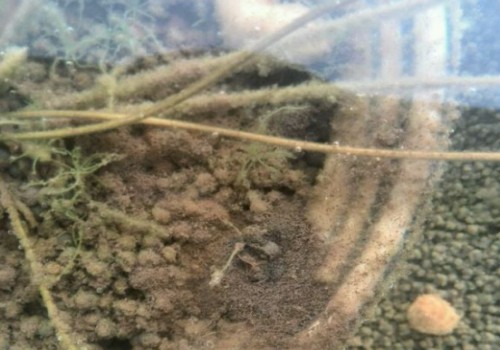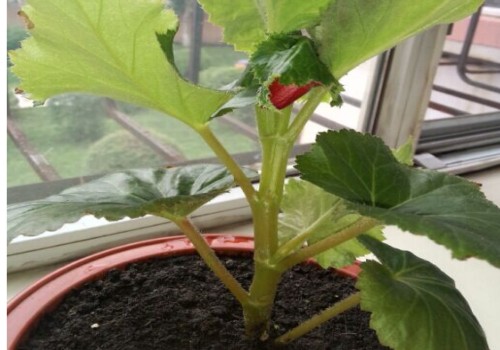Treatment of rotten Root of Rieger Begonia
Rieger Begonia is a popular flower plant, which not only blossoms beautifully, but also has large green leaves. It is of high ornamental value as a potted plant. And the flowering period of Rieger Begonia is also very long, as long as the pot culture environment is suitable, the management work is good, and it can even blossom all the year round. It is a rare plant with long-term flowers to enjoy.

But if we want to grow Rieger Begonia in potted plants, we also need to find out its character and manage it scientifically. Rieger crabapple prefers the growth environment of warm and humid, smooth ventilation and sufficient light, but it also has the characteristics of water resistance and fear of waterlogging. If it is watered too much and the humidity is too high, it is not only easy to cause rotten roots. At the same time, it is also easy to cause rotten leaves and stems.
For potted Rieger crabapple, the emergence of rotten roots is more fatal, generally due to high temperature, high humidity and poor ventilation, resulting in stuffy cultivation, retting roots and black rot. Once the root rot of the plant is relatively deep, it is basically impossible to save it, and even if it is lucky enough to make it barely survive, it will certainly not grow well, because the root is the foundation and foundation for the growth of Rieger Begonia, and the root and foundation are broken. the plant is naturally difficult to save.
But nothing is absolute, and the same is true for potted Rieger begonia. If the rotten root is relatively mild, we just need to dig it out, trim the root, sterilize and disinfect it, and then change the pot and change the soil to plant it. Even if the rotting root is serious, we still have a way to keep it alive. Today, the editor will tell you how to deal with the rotten roots of Rieger Begonia.
In fact, the way to deal with it is also very simple. Although the original Rieger Begonia often causes rotten roots due to stagnant water or excessive humidity in the basin, most of the stems and leaves of its early plants are relatively healthy, and even some stems and branches are very strong. Therefore, we can cut off these strong stems and branches and use them for cutting to propagate new potted seedlings. In this way, Rieger Begonia can achieve the purpose of extending life in the case of rotten roots. And as long as we manage well in the later stage, we can also get a pot of Rieger Begonia with delightful growth and delicate flowering.
And Rieger crabapple is very easy to survive by cutting, only need to cut from the rotten root plants without buds, flowers in a cool and ventilated place to dry the wound can be used for cutting. After the wound condenses and dries, we insert the base into the soft, breathable and pre-soaked pine needle soil or the mixed matrix of rotten leaf soil and perlite, or even clean coarse sand.
Before the cuttings take root, we usually only need to spray a small amount of water to moisturize the substrate; after rooting, we can put a tray with the right amount of water under the flowerpot. In this way, the water in the tray will soak the matrix in the basin through the outlet of the basin bottom, which can play a good role in moisturizing but not too much water. Not only that, we can even cut healthy leaves for leaf insertion, the method is similar to that of branch insertion, and we can also obtain potted seedlings of Rieger begonia.
Time: 2019-05-27 Click:
- Prev

What about the worms growing in the lotus soil?
Many people like to raise water lilies, which are not only for appreciation, but also full of interest. However, the conservation environment we provide should be good enough. If there is insufficient light and poor ventilation, it is easier for worms to grow in the basin. If the worms grow in the water, especially the larvae of mosquitoes
- Next

What if Rig Begonia doesn't bloom?
Rieger Begonia not only flowers big color Yan, but also green leaves wide, potted planting words, both flowers can be viewed, but also suitable for viewing leaves. However, if we want Rieger Begonia to bloom smoothly as scheduled, not only the growth environment should be suitable, but also the conservation and management methods should be scientific. Otherwise, it may lead to the situation that Rieger Begonia does not bloom
Related
- Fuxing push coffee new agricultural production and marketing class: lack of small-scale processing plants
- Jujube rice field leisure farm deep ploughing Yilan for five years to create a space for organic food and play
- Nongyu Farm-A trial of organic papaya for brave women with advanced technology
- Four points for attention in the prevention and control of diseases and insect pests of edible fungi
- How to add nutrient solution to Edible Fungi
- Is there any good way to control edible fungus mites?
- Open Inoculation Technology of Edible Fungi
- Is there any clever way to use fertilizer for edible fungus in winter?
- What agents are used to kill the pathogens of edible fungi in the mushroom shed?
- Rapid drying of Edible Fungi

